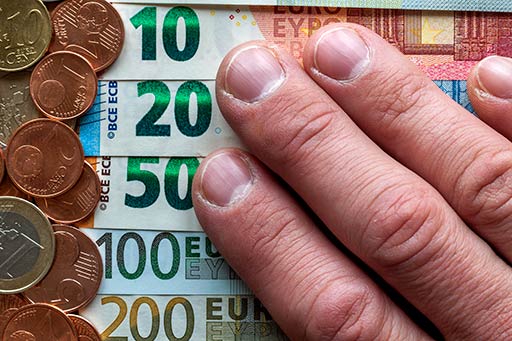Unlock Amazon France’s potential! Navigate unique language, tax, & compliance needs for profitable, legal product launches. Your guide starts here.

How to Expand to Amazon France: A Step-by-Step Guide for Sellers
Amazon France is the third-largest Amazon marketplace in the EU, with over 40 million online shoppers and strong demand in categories like home, beauty, and fashion. This means if you’re already selling in the US, UK, or Germany, expanding to the French market is a strategic next step.
However, success in France doesn’t come from just copying and pasting your current listings. The language, tax rules, and customer expectations are different. So, you’ll need to meet specific legal requirements, localize your content, and set up your account correctly to make the most of the opportunity and avoid compliance issues.
This guide walks you through exactly what to do, and if you follow it from Step 1 to Step 6, you’ll be ready to launch your products legally and profitably on Amazon France with minimal hassle.
Step 1: Evaluate Demand in the French Market
Before you register for VAT or send inventory to France, take time to confirm that there’s actual demand for your product on Amazon.fr. This step saves you time and helps you avoid unnecessary costs.
To see if there’s a growth opportunity for your product in Amazon France, install the Helium 10 X-Ray Chrome extension. It’ll help you analyze your competitors’ performance.
Next, go to Amazon.fr and enter your product’s main keyword (e.g., “water resistant backpack”) in the search bar. You will see a list of products already selling in your category.
Identify 5-10 listings with lots of reviews and high rankings, and lower-performing listings that are most similar to yours. Then look at how many units each competitor is selling per month.
If competitors in your category sell between 500-1,000 units per month, this indicates strong demand. However, if most listings sell fewer than 100 units monthly, it might not be worth pursuing.
Step 2: Register for VAT in France
If you want to use Fulfillment by Amazon (FBA) or sell directly to French customers as a non-EU seller, VAT registration is a legal requirement. Even if you’re already VAT-registered in another EU country like Germany or Italy, France requires a separate VAT number for your goods to enter the country.
You can register for VAT on your own through the French tax office (Service des Impôts des Entreprises Étrangères). To do this, you’ll need to submit:
- A completed VAT registration form
- A copy of your business registration certificate (translated into French)
- Proof of commercial activity (for example, a link to your Amazon storefront)
- A power of attorney (if someone is applying on your behalf)
If your business is based outside the EU, you are also required to appoint a fiscal representative based in France. This representative will be jointly liable for your VAT reporting and payments, so choosing a reliable one is essential.
To simplify this process, many sellers work with tax advisors or customs brokers who specialize in VAT registration and import procedures.
Step 3: Meet Product Compliance Requirements
Before you ship inventory, you need to make sure your products meet French and EU compliance laws. If your products fall into a regulated category and you’re not compliant, Amazon can restrict your listings or withhold disbursements.
Here are some product compliance requirements you should pay attention to:
1. Extended Producer Responsibility (EPR)
Packaging EPR applies to every seller who ships to customers in France, regardless of category. Additionally, French EPR laws apply more specifically to electrical and electronic equipment (EEE), batteries, furniture, textiles, toys, sports equipment, DIY, and gardening tools.
What you need to do:
- Go to Amazon France EPR page
- Register with the appropriate Producer Responsibility Organization (PRO) for each category you sell in
- After registration, you’ll receive a Unique Identification Number (UIN) from each PRO
- Submit your UINs inside Seller Central
If you don’t do this, Amazon may enroll you in its Pay-on-Behalf program, where they pay the eco-contributions and deduct the costs from your account (with added admin fees).
2. Comply with WEEE (For Electronics Sellers)
If you sell electronic products, you must register under the Waste Electrical and Electronic Equipment (WEEE) directive in France.
What you need to do:
- Register with a WEEE-approved PRO like Ecologic or ERP France
- Obtain your WEEE registration number
- Report your product quantities and pay your recycling fees quarterly or annually
- Upload your WEEE number in Seller Central
WEEE also applies to accessories and cables sold with electronics, not just major devices.
3. Verify Product-Specific Compliance
Some product types require additional documentation, labeling, or markings. Here are some examples:
- CE Marking for toys, electronics, PPE, and more
- INCI labeling for cosmetics
- Safety warnings and ingredient info for food, supplements, and chemicals
- Correct voltage and plug types for electronics
Check the Amazon EU product compliance guidelines inside Seller Central if you’re unsure about your category.
Step 4: Set Up Your Amazon France Seller Account
Once your VAT registration is underway, you can now set up Amazon France as a selling marketplace inside your existing Amazon account.
To do this:
- Go to Seller Central and navigate to the Global Selling section.
- Scroll to the “Amazon Stores Worldwide” section, select “Link Account”, and follow the prompts to connect to your French marketplace.
This will open up a sub-account for France inside your unified Seller Central, and you can now start listing products, managing inventory, and launching ads on Amazon.fr.
Step 5: Optimize Your Listings for French Customers
If your listings are in English or poorly translated, they won’t show up in the search results or convert as they ought, no matter how great your product is. This is because French customers expect product listings to be in their language and use local currencies and measurements.
How to Optimize Your Listings
1. Use the Build International Listings (BIL) Tool
Amazon’s BIL tool allows you to replicate your existing listings to other marketplaces. While it offers machine translation, it’s advisable to review the translated content for accuracy.
2. Hire a Native-Speaking Amazon Translator
If you prefer to work with agencies or freelancers, choose someone who has written for Amazon.fr specifically.
3. Do It Yourself (Only If You’re Fluent)
If you or someone on your team speaks fluent French and understands Amazon SEO, you can write your listing in-house. Just be sure to double-check everything.
4. Localize Beyond Translation
Even if your translation is accurate, you still need to tailor the content for the French market. Here are some things to do:
- Update measurements: Use centimeters, kilograms, and liters instead of inches or pounds.
- Adjust formatting: French pricing uses commas as decimal separators (e.g. 14,99 €).
- Add relevant keywords: Use a keyword research tool (like Helium 10) to find search terms relevant to the French marketplace and include them in your listings.
Step 6: Set Up Fulfillment and Logistics for Amazon France
Now that your listings are localized and ready, the next step is to decide how orders will be fulfilled. There are three main options when selling in France:
1. Fulfillment by Amazon (FBA)
With FBA, you send your products to Amazon’s fulfillment centers in France, and Amazon handles storage, shipping, returns, and customer service.
This option is best for sellers who want a hands-off fulfillment process.
Benefits of FBA:
- Prime Eligibility: Your products are listed as Prime, boosting visibility and increasing conversions.
- Faster Shipping: Storing inventory in Amazon’s French warehouses ensure quick delivery.
- Streamlined Operations: Amazon manages returns and customer service, reducing your workload.
What You Need to Know:
- Shipping Inventory to France: Sending your products to a designated Amazon French fulfillment center is not free. Amazon’s FBA Calculator can help you estimate fees, including storage, fulfillment, and referral costs.
- Customs and VAT: You’ll need to handle customs clearance and pay import VAT when shipping inventory to France.
2. Pan-European FBA
If you plan to expand beyond France into other European markets, consider Amazon’s Pan-European FBA program. It allows you to store products in multiple Amazon warehouses across Europe.
How It Works:
- You ship your inventory to a French fulfillment center.
- Amazon distributes your products to other European warehouses based on demand.
Benefits of Pan-European FBA:
- Wider Reach: Your products become available in multiple European marketplaces (e.g., Germany, UK, Italy).
- Cost Savings: Less international shipping costs for customers.
What You Need to Know:
- You must register for VAT in all countries where your inventory is stored.
- Pan-European FBA works best for sellers with established sales across Europe.
3. Fulfillment by Merchant (FBM)
With FBM, you store, pack, and ship products directly to customers. This option gives you complete control over the fulfillment process but requires more effort.
Benefits of FBM:
- Control Over Shipping: You can customize packaging and shipping methods.
- Works for Slow-moving Items: If your product doesn’t sell quickly, storing it yourself can reduce long-term FBA storage fees.
What You Need to Know:
- You’re responsible for customs clearance and international shipping.
- FBM works best for sellers who have robust logistics systems or handle custom products.
| Feature | FBA | Pan-European FBA | FBM |
| Prime Eligibility | Yes | Yes | No |
| Shipping to Customer | Amazon | Amazon | Seller |
| Upfront Costs | Medium | High (multi-country VAT) | Low |
| Scalability | High | Very High | Moderate |
| Control | Limited | Limited | Full |
Conclusion
From VAT to EPR, to proper localization and fulfillment, France comes with specific rules you can’t afford to ignore.
By following the exact steps in this guide, you’re launching the right way, with full compliance, proper logistics, and listings optimized for French shoppers. Now it’s time to take action and start building your presence in one of Europe’s most promising markets.

